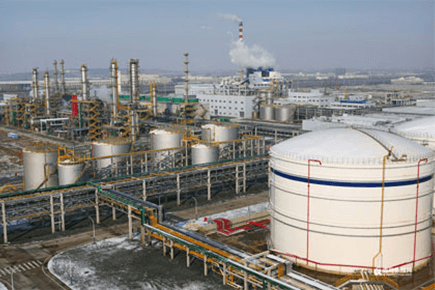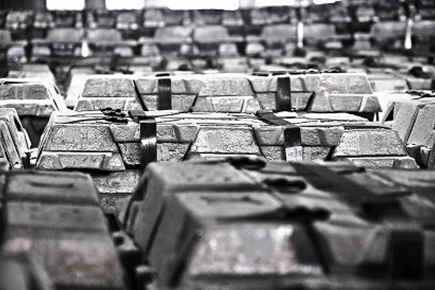Contact Us
Advanced Technology for Arsenic Removal from Ground Water
What is arsenic in ground water?
Arsenic is a common source of pollution in natural ground water, and is the most dangerous element in the chemical world. Arsenic is present in certain rocks and soils, and slowly diffuses into water, often in both organic and inorganic forms. Inorganic arsenic is more prevalent in water and is also more toxic. As a natural component of various minerals, the arsenic concentration in groundwater varies depending on the nature of the soil, whether the arsenic-containing layer of the soil is in contact with groundwater and whether there are reducing conditions.
What are the dangers of arsenic?
More than 70 countries and territories around the world have groundwater with high levels of arsenic. The impact of this is that more than 140 million people have excessive levels of arsenic in their drinking water, with millions showing symptoms of arsenic poisoning. However, there is a lack of economically reliable arsenic removal technology in the world which is easy to operate and deploy across all regions. Arsenic exists in groundwater As(Ⅲ) and As(Ⅴ), and the toxicity of As(Ⅲ) is about 60 times that of As(Ⅴ). Arsenic mainly exists in the form of electrically neutral As(Ⅲ) under the condition of reducing groundwater. Arsenic compounds are very harmful to the human body, and can cause serious damage to various systems in the body. Chronic arsenic poisoning from excessive levels in drinking water and long-term exposure can cause serious harm to the body and can cause skin cancer, lung cancer, bladder cancer and liver cancer.
Limiting value of arsenic content
In Germany the Drinking Water Regulation (TrinkwV) stipulates that the limit for contaminants in drinking water must be complied with. The limit for arsenic (μg /L) is 10 micrograms per liter (μg /L). This value corresponds to the limit value of the European Drinking Water Directive and the guideline value recommended by the World Health Organization.
The World Health Organization recommends no more than 10 parts per billion (ppb) of arsenic in drinking water. However it is recommended to consume as little arsenic as possible as even low concentrations can have harmful effects on the human body.
Effective January 23 2006 the U.S. Environmental Protection Agency (EPA) established more stringent requirements for safe levels of arsenic in drinking water, lowering the maximum contaminant level (MCL) from 50 ppb to 10 ppb.
Sunresin’s separeation and adsorption technology for arsenic removal
Tap water is an indispensable resource in our daily lives, and the quality of water is directly related to health and quality of life. However, with the acceleration of industrialization and the intensification of environmental pollution, the tap water in many areas contains excessive arsenic elements, which poses a serious threat to health. Therefore, effective methods for removal of arsenic from tap water have become an important topic in the field of water treatment. As an efficient and environmentally friendly water treatment technology, ion exchange technology has shown unique advantages in arsenic removal from tap water.
The principle of the ion exchange method is to exploit exchangeable ions present on both an anion resin and arsenic. This exchange reaction removes the toxic arsenic molecules from drinking water. The amount of sludge generated is only 20% of that generated by the chemical precipitation method, greatly reducing disposal costs. The ion exchange method is high capacity, simple to operate, easy to regenerate, has good separation effects, and can meet strict discharge standards. Ion exchange also enables recycling of various valuable ingredients, so is considered to be a promising method as the scope of arsenic removal becomes more and more extensive.
SEPLITE® LAR714 is a high selectivity, regenerable ion exchange resin optimized for removal of arsenic from ground water and other solutions. With regeneration it provides a very long service life-cycle.
LAR714 contains iron oxide in formulation for high selectivity to arsenic. It has outstanding operational capacity and is ideal for use in both neutral and alkali applications. This resin was regenerated with acid, so is not recommended for use in acidic conditions.
LAR714 is supplied in bead form and is suitable for use from small-scale cartridges to industrial vessels. For normal usage, it is similar to other conventional ion exchange resins.
Sunresin can provide Skid Mounted System for SEPLITE® LAR714 resin:
- 1. The equipment does not need additional foundational installation and can be installed directly on level concrete surfaces.
- 2. The pipeline should have fixed supports.
- 3. A drainage ditch is set within one meter from the equipment.
- 4. The inlet and outlet water pipe installation, manual valve, pressure gauge, bypass valve between the inlet and outlet water pipe, and the inlet end must be equipped with precision filters.
- 5. The salt tank is placed close to the resin vessel and for convenience when adding NaCl.
_1722243855_WNo_400d300.webp)
(1)(1)_1722243883_WNo_400d300.webp)
_1722243900_WNo_400d300.webp)
|
T/h Flow rate |
specification | volume |
(mm) Diameter |
(mm) height |
Opening size |
||
| British system | metric system | (L) |
Net height |
Total height |
|||
| 0.5-1 | 8x20 | Φ200x500 | 8 | 206 | 470 | 495 | 2.5 |
| 0.5-1 | 8x35 | Φ200x875 | 19 | 206 | 890 | 925 | 2.5 |
| 0.5-1 | 8x44 | Φ200x1100 | 25 | 206 | 1115 | 1140 | 2.5 |
| 1-1.5 | 10x35 | Φ250x875 | 30 | 257 | 890 | 915 | 2.5 |
| 1-1.5 | 12x65 | Φ300x1650 | 84 | 308 | 1610 | 1675 | 2.5 |
| 1.7-2.5 | 13x54 | Φ330x1350 | 83 | 334 | 1370 | 1400 | 2.5 |
| 2.0-3.0 | 14x65 | Φ350x1650 | 116 | 358 | 1610 | 1665 | 2.5 |
| 2.0-3.0 | 14x65 | Φ350x1650 | 116 | 358 | 1610 | 1665 | 4 |
| 2.5-3.5 | 16x65 | Φ400x1650 | 150 | 405 | 1640 | 1665 | 2.5 |
| 2.5-3.5 | 16x65 | Φ400x1650 | 150 | 405 | 1640 | 1665 | 4 |
| 2.5-3.5 | 16x65 | Φ400x1650 | 150 | 405 | 1640 | 1665 | 4 |
| 3-4.5 | 18x65 | Φ450x1650 | 150 | 475 | 1665 | 1900 | 4 |
| 4.5-6.5 | 21x62 | Φ530x1550 | 257 | 545 | 1600 | 1840 | 4 |
| 9.0-13.0 | 30x72 | Φ750x1800 | 552 | 762 | 1800 | 2040 | 4 |
| 13-23 | 36x72 | Φ900x1800 | 680 | 930 | 1800 | 2140 | 4 |
| 16-23 | 40x72 | Φ1000x1800 | 836 | 1020 | 1800 | 2145 |
6 flange |
| 23-34 | 48x72 | Φ1200x1800 | 1046 | 1020 | 1800 | 2210 |
6 flange |
| 23-34 | 48x96 | Φ1200x2400 | 1394 | 1220 | 2400 | 2695 |
6 flange |
| 35-50 | 60x96 | Φ1500x2400 | 2150 | 1520 | 2400 | 2755 |
6 flange |
Advantages:
- Reduce arsenic content to <5 ppb;
- No backwashing required during regeneration;
- Can be regenerated and reused many times;
- Certified quality and guaranteed performance;
- For various drinking water applications;
- Excellent hydraulics and short contact time for efficient adsorption of arsenic;
Some Case:
The arsenic removal project of a water treatment plant in a region is a groundwater arsenic removal project in the region. The Arsenic concentration of inlet water is 0.05mg/l and the treated water is 400m³/h.
According to the related discharge standards of arsenic, combined with the overall situation of the project and the actual needs of customers, quartz sand + activated carbon + arsenic removal resin are used to selectively remove arsenate and arsenite, so that the effluent (outlet) water quality can be stabilized at 0.001mg/l. For some of the conventional ions present in drinking water, the general order of affinity for strong base anion exchange resins is as follows:
Sulfate > Arsenic > Nitrate > Chlorine > Bicarbonate > Fluorine
When the exchange capacity of the general alkali cathode (stong base anion) resin is exhausted, the sulfate will replace the arsenic, so that the arsenic concentration rises significantly, so that the arsenic content in the raw water is exceeded (so that it exceeds the arsenic content in the raw water), so if the equipment is overloaded, the arsenic content in the drinking water of the end user will exceed the standard.
Process selection of arsenic removal project in the water treatment plant:
Quartz sand + activated carbon + arsenic removal resin
Process principle:
SEPLITE® LAR714 selectively removes arsenate and arsenite,
The SEPLITE® LAR714 arsenic removal ion exchange resin used in this project has a high adsorption capacity and adsorption rate for arsenic.
The special structure of the resin functional group has selective adsorption for arsenate and arsenite, reducing arsenic concentrations of outlet water to <0.001mg/L. The exchange capacity of the resin after adsorption saturation and regeneration is stable, reusable, and the equipment operational energy consumption is low. SEPLITE® LAR714 resin enables a high degree of automation, with the option of automatic/manual control of the water flow and regeneration process.















